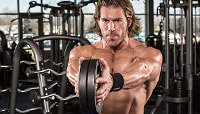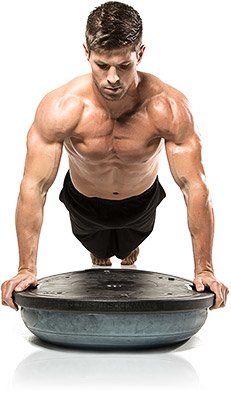
As athletes and trainers, we know that balancing opposing muscle groups improves performance and reduces injury. Balance, with regards to body awareness, also improves performance by increasing efficiency of movement.
By focussing only on these types of balancing acts, in our quest to improve both strength and overall athletic performance, we may be neglecting the most important balancing act of all - balance between the deep, spinal muscles and the more superficial abdominal muscles.
These are often referred to as the inner and outer units, respectively. In this article, the functions of these inner and outer units will be addressed. In addition, the assessment and the training of these units will also be discussed.
Inner Unit
The inner unit refers to the muscles that attach to adjacent vertebrae, the transversus abdominus, internal oblique (fibres) and fibres of the quadratus lumborum.
Collectively, these muscles function to stabilize spinal and sacroiliac joints, and to control position and movement. Repeated damage to these muscles due to lack of control not only results in low back pain, but to diminished strength and coordination.
Outer Unit
These muscles produce large movements of the torso. They include the rectus abdominus, external oblique, internal oblique, quadratus lumborum, and erector spinae. The actions of these abdominal muscles are easily visualized. As mentioned earlier, they produce movement. They also transfer the load between the pelvis and thoracic cage during weight-bearing activities.
At this point, I'll also mention the limitations of these global muscles. First and foremost, these muscles lack the ability to reduce shear between adjacent vertebrae, having no role in the prevention of this class of injury. They also place excessive strain on spinal structures (ligaments, disc, etc.) via excessive contraction and rigidity.
Finally, these muscles reduce spinal support by causing too much movement of the trunk. These muscles are important and should not be neglected. However, they should not be trained at the expense of the deeper, inner unit.
Spinal Stabilization
Contrary to popular belief, spinal stabilization does not imply "training" functional movements. Rather, it should emphasize the improvement of underlying joint stabilization, using the appropriate muscles. That is, the inner unit.
For the sake of completeness, spinal stabilization involves the interplay between the ligaments, muscles, and nervous system. It is beyond the scope of this article, however, to explore in detail the functions of the ligaments and nervous system.
Effective stability will result in the control of spatial orientation and joint movement. I must re-iterate the importance of this as it applies to injury prevention. Control of spatial orientation results in control of the neutral zone.
The neutral zone refers to the range in which the strain on the ligaments is not excessive and is still within anatomical limits. Muscle fatigue, injury, and lack of motor control can all lead to movement outside of this zone, producing further injury.
The Basis Of Assessment And Exercise Techniques
Now that the ideas of spinal stability being critical to athletic as well as daily performance, of the outer unit being responsible for gross, global movement patterns, and of the inner unit being responsible for spinal stability, the development of a spinal stability program should be addressed.
When developing a spinal stability program, consider the following points for assessment and overall program design.
1
Type Of Muscles
Direct the testing and exercise toward active joint stability, specifically to muscles capable of providing efficient support. Avoid substitution by the muscles that can move more than one joint or one area of the spine.
2
Muscles Specialized For A Joint Stabilization Role
Testing and exercise procedures should include a method of recognizing if the local stabilizing muscles are capable of supporting the joint structures. The procedure must include an assessment of the continuous muscle activity required for joint support for normal function.
3
Muscle Stiffness And Kinaesthetic Sense
Muscle stiffness and body awareness must be emphasized through continuous low-load muscle activation and a focus on a shortened range of motion.
4
Co-Contraction Of Muscle Groups
Incorporating slow, controlled, precise closed-kinetic chain exercises (an exercise in which movement at one joint produces movement at another joint - an open-kinetic chain exercise, on the other hand, involves independent joint movement) is imperative.
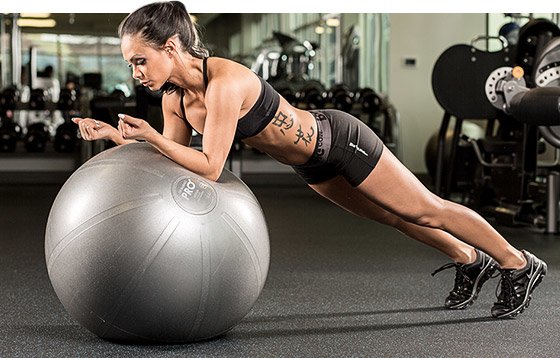
Furthermore, co-contraction of the appropriate muscles in a neutral position is also required. Finally, unstable environments, such as wobble boards and stability balls can be implemented. Avoid over training the large outer-unit muscles.
5
Fast Ballistic Movements
Avoid fast ballistic movements during the early training periods. These should only be implemented with caution at a later stage, if required. Monitor closely the effect of ballistic exercise on the local stabilizing muscles.
6
Joint Pain
The restoration of proprioception to the muscles surrounding an injured joint is important, as is stabilizing these joints.
7
Loss of Muscle Control and Antigravity Function
Include low-intensity exercise (30-40% of your maximal resistance) to emphasize activity of postural muscles. Furthermore, change postures and movement to place more of the load on the antigravity muscles.
Training
With the aforementioned considerations addressed, a training program can now be discussed. When developing a training program, these principles should be loosely followed.
- Formal Motor Skill Training of Deep Muscles
- Incorporation of the Skill into Light Functional Tasks
- Incorporation of the Skill into Heavy Functional Tasks
Well, what is this "skill"? It is actually a combination of the following four skills designed to better activate the inner unit and to integrate this activation into functional tasks.
1
Abdominal hollowing
This involves contracting the transverses abdominus (TVA). In other words, one should attempt to draw their navel toward their spine as they breathe out.
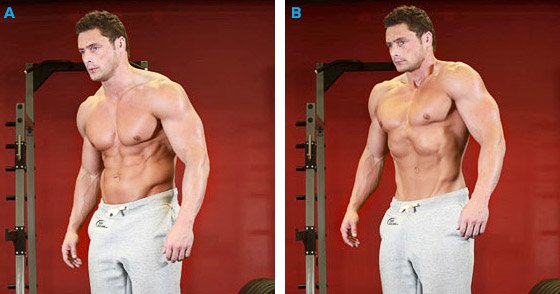
2
Contraction of the pelvic floor muscles
While drawing the navel in, one should also contract the muscles of the pelvic floor. Imagine that you are trying to stop the flow of urine. Kegel exercises, used by pregnant women are also effective.
3
Diaphragmatic breathing
As any singer will tell you, it's important to fill the abs as you inhale. Most of us breathe incorrectly by filling the chest with air during the inhale. Normally, contraction of the diaphragm occurs shortly after contraction of the transverses abdominus and pelvic floor muscles.
I know what you're now thinking. How do I fill up my belly with air while I'm drawing my belly in? Here's your answer. Momentarily hold your breath while contracting the TVA and pelvic floor. Now inhale, filling the lungs with air. It is at this point that you're spine is most stable. Perform the exercise, slowly exhaling to completion. Be sure to maintain contraction of the TVA and pelvic floor!
4
Reduction of unwanted global muscle activity
Signs of unwanted activity include tilting the pelvis posterior (tucking in your buttocks), flattening out your lower back, and dropping your rib cage. Other signs are no movement of the lower abs, inability to relax the abdominal wall, and increased width of the abdominal wall. Finally, contraction of the mid back muscles is indicative of unwanted muscle activity.
Formal Motor Skill Training Of Deep Muscles
This aforementioned step is the most important to learning proper inner unit activation. It involves the following:
- Improved perception and precision of deep muscle contraction
- Repetition, repetition, repetition, repetition
- Control of skill in upright positions
- Quantitative re-evaluation of skill
Incorporation Of The Skill Into Light Functional Tasks
With the activation of the inner unit perfected, it's important to next attempt incorporation of this skill into functional tasks. This is not only important for the athlete but also for your average client. This type of control is useful if it can be applied to carrying groceries, sitting at a desk, or simply going for a walk. For the athlete, these skills must be incorporated into the movements required for their sport.
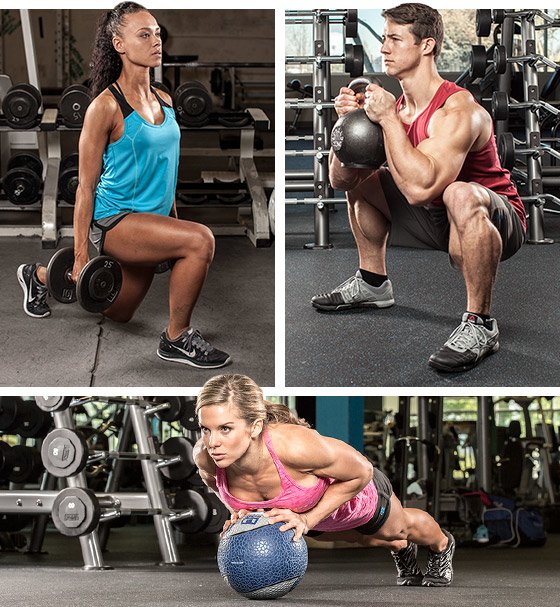
Including proper contraction of the deep abdominal muscles into closed chain, bodyweight exercises is the first step. The exercises included here are ideal but can be substituted by a variation or a different movement:
Again, the focus should be on precision, not on the amount of weight lifted. Repetitions should be at least 15 to develop the proper, unconscious habits.
Incorporation Of The Skill Into Heavy Functional Tasks
If performing these exercises will not improve my squat or deadlift, I probably will not perform them. If one cannot apply them whilst running, skating, or even golfing, they bear little relevance to the athletic population. It's important to note, however, that the activation of the inner unit should not be a conscious effort during heavy training.
Visible abdominal hollowing is not necessary during heavy lifting or sport specific skill completion. The proper preliminary training of the inner unit should lead to unconscious activation and stabilization. Therefore it's not necessary to force the abdominal region to get "thin" during these movements.
To illustrate the point, there was a study performed demonstrating that those golfers who could contract and hold their transversus abominus during a swing could drive the ball significantly further than control subjects. Furthermore, it has been concluded through various studies that the diaphragm contracts prior to movement of the upper and lower limbs, irrespective of breathing pattern.
Since the load will be much higher during this last phase of training, one must be aware of the contraction of the larger, superficial outer unit. This cannot be avoided. And it's this type of contraction that may cause a visual abdominal expansion, rather than a hollowing. However, without control of the deep muscles, this contraction can lead to the problems mentioned above.
Since any weight-training or sport-specific exercise can be used, the goal of this training is to develop unconscious, efficient muscle contraction. With time, you should be able to incorporate these subtle movements into your sport and your lifting program, increasing both performance and reducing injury.
In other words, you'll be back in balance.
Recommended For You

How To Get A Better Butt: 5 Rules For Stronger Glutes
Follow these 5 rules for stronger, better-looking glutes. Your aching back, tight hips, and saggy jeans will thank you!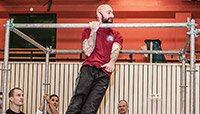
New Ways To Build Bodyweight Strength!
Bodyweight training has its own set of rules when it comes to things like progressions, 1RMs, reps, and rest. Learn the ropes from the man who teaches bodyweight mastery worldwide!